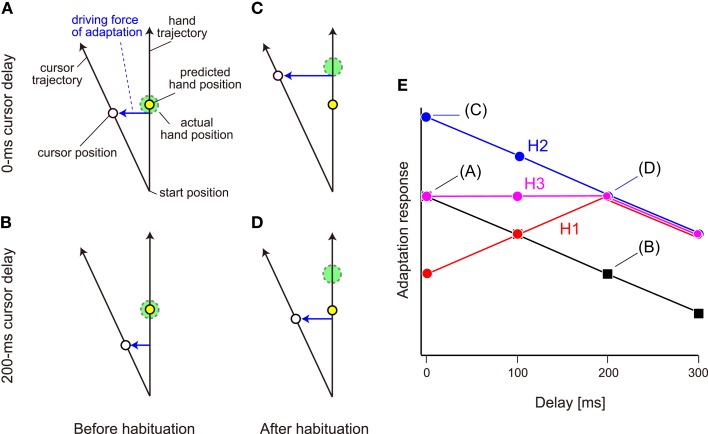Figure 1.
Schematic representation of the hypotheses. (A) We assume that the sensory prediction error represented by lateral deviation from the hand position predicted by the forward model to the cursor is a driving force of adaptation to a visual rotation. (B) The sensory prediction error decreases when a cursor delay of 200 ms is introduced. In (A, B), the predicted hand position (broken circle) is identical to the actual hand position (continuous circle). (C,D) However, if the habituation to delayed cursor of 200 ms shifts the predicted hand position to the delayed position, the amount of sensory prediction error is restored when the cursor is displayed with the same 200 ms delay (D) and it rather increases when the cursor is displayed with no-delay (C). (E) When no visual feedback delay is introduced, the adaptation response to the visual rotation provided with a certain delay should gradually decrease with the increase in delay. Three hypotheses predict different patterns of adaptation response after habituation to a visual feedback delay of 200 ms. Hypothesis H1 predicts the response is maximal at 200 ms delay (red), while the H2 predicts the response has a monotonically decreasing function (blue), and H3 predicts an intermediate response of H1 and H2 (magenta).

